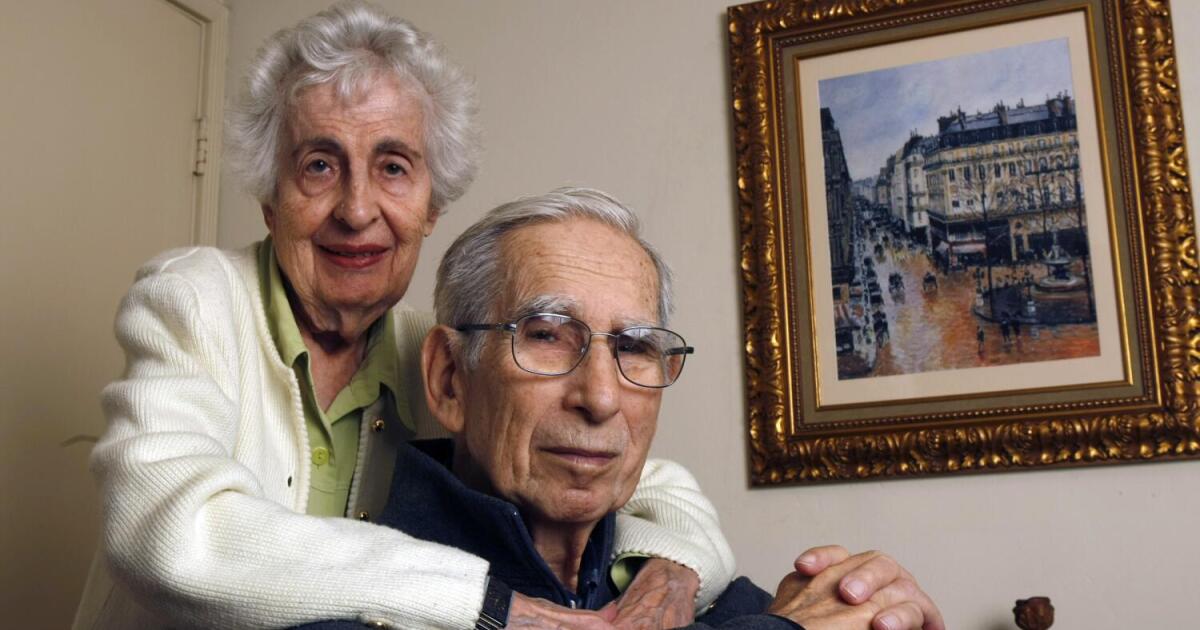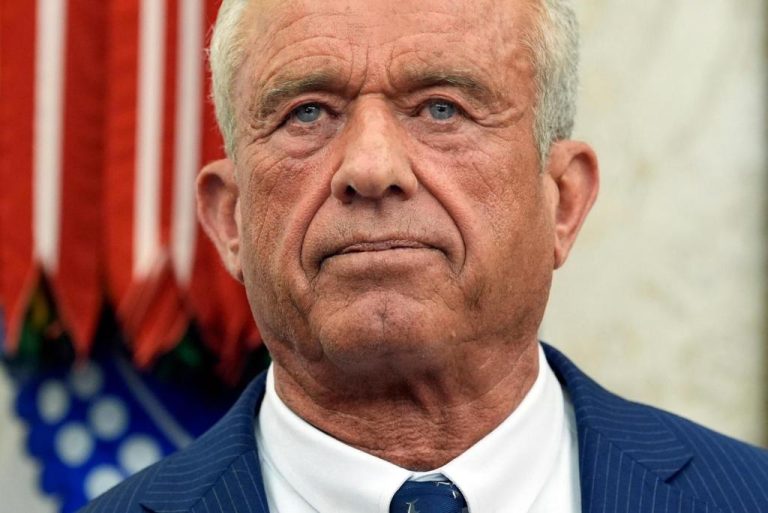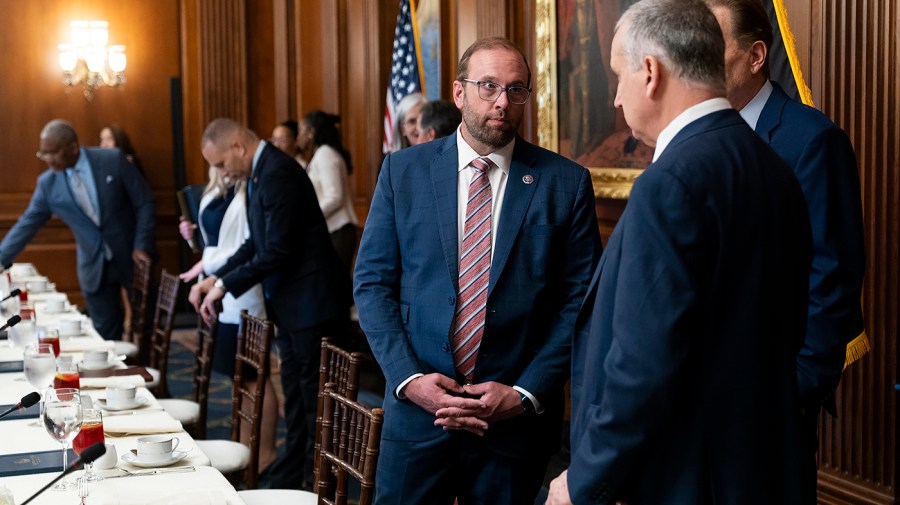
After nearly two decades of litigation that has included a ruling by the U.S. Supreme Court, the 9th U.S. Circuit Court of Appeals ruled unanimously Tuesday that a Spanish museum can keep a painting that was looted from the German Jewish family of a former La Mesa resident — though one judge expressed moral misgivings about the decision.
“Sometimes our oaths of office and an appreciation of our proper roles as appellate judges require that we concur in a result at odds with our moral compass,” Judge Consuelo Callahan wrote in a concurring opinion. “For me, this is such a situation.”
Callahan also wrote that, while not legally obligated to do so, “Spain … should have voluntarily relinquished the Painting” in accordance with international agreements it has signed regarding the return of Nazi-confiscated art.
Tuesday’s ruling was the latest in a winding, complex case first filed in 2005 by La Mesa resident Claude Cassirer, who died in 2010. The suit sought the return of French artist Camille Pissarro’s 1897 Impressionist masterpiece, “Rue Saint-Honoré, Après-midi, Effet de Pluie,” which by some estimates is worth more than $30 million.
It now hangs at Madrid’s Thyssen-Bornemisza Museum after Spain purchased it in 1993, along with some 800 other paintings, from Baron Hans Heinrich Thyssen-Bornemisza.
The painting originally belonged to Cassirer’s family for more than four decades until 1939 when his grandmother, Lilly Neubauer, was forced to sell it to a Berlin art dealer appointed by the Nazi government to obtain it. The forced exchange, for $360, was a mandatory condition for Neubeauer and her husband to obtain visas to England as they fled the Holocaust.
“There is no dispute that the Nazis stole the Painting from Lilly,” Judge Carlos Bea wrote in the opinion.
But that was not the question Bea, Callahan and Judge Sandra Ikuta had to answer. The issue they had to decide, as Bea explained in the opinion, was whether Spanish law or California law would apply to determine ownership of the painting.
“Under California law as it currently stands, the plaintiff would recover the art while under Spanish law, the plaintiff would not,” Bea wrote.
The judges determined Tuesday that Spanish law took precedent over California law in this case, affirming a previous ruling by a federal judge in Los Angeles.

FILE – This May 12, 2005 file photo shows a visitor viewing the Impressionist painting called “Rue St.-Honore, Apres-Midi, Effet de Pluie” painted in 1897 by Camille Pissarro, on display in the Thyssen-Bornemisza Museum in Madrid.
(ASSOCIATED PRESS)
In a statement, attorneys representing the Thyssen-Bornemisza Collection Foundation praised the ruling.
“The Ninth Circuit’s unanimous affirmance of the trial court’s merits based decision — confirming the Foundation’s ownership of the Pissarro painting that it lawfully acquired for public display in Madrid in 1993 — is a welcome conclusion to this case,” said attorneys Thaddeus Stauber and Aaron Brian of the U.S. firm Nixon Peabody, and Spanish attorney Javier Martínez Bavière of the Law Offices of Pedro Aleman.
Attorneys for the Cassirer family did not immediately return a message seeking comment Wednesday.
Cassirer, born in 1921 in Berlin, previously told the Union-Tribune that he remembered seeing the painting as a child in his grandmother’s apartment. He had a photograph showing it hanging in her parlor. Neubeuer sued to reclaim the painting after the war, but it couldn’t be found. The family was told it went missing in the Allied bombing of Munich, and in 1958, the West German government paid them about $13,000 for their loss. Neubeuer died in 1966 while living with Cassirer, her lone heir.
Cassirer, who ended up in New York after also fleeing the Holocaust, eventually became a commercial photographer in Cleveland before retiring to La Mesa in 1970. It was at his San Diego County home where, in 2000, he received a call from a friend who informed him that his family’s Pissarro was not missing — it was hanging in the Spanish museum.
According to the court records, after the Nazis forced Neubeuer to sell the painting to Jackob Scheidwimmer, the Berlin art dealer, he then forced another German Jewish collector, Julius Sulzbacher, to exchange three German paintings for the Pissarro. Sulzbacher was also seeking to escape Nazi Germany, and when his family fled, the Gestapo confiscated the painting. It was eventually auctioned in Berlin in 1943, then ended up in New York and was sold to a collector from St. Louis in 1952.
In 1976, the Baron Hans Heinrich Thyssen-Bornemisza bought the painting and added it to his private collection in Switzerland, widely regarded as one of the most spectacular in the world. Spain bought the 800-painting collection in 1993 for about $330 million. Named after the baron, the museum is now one of the most popular in Spain — and the Pissarro is one of its showpieces.
Cassirer sent a letter to Spain’s ministry of culture asking for the Pissaro’s return in May 2001. Spain, like dozens of other countries, has signed international agreements pledging to return Nazi-looted artworks to their rightful owners. But Spain declined to return the painting to Cassirer.
And so he sued. After his death, his children David and Ava took over as plaintiffs. Ava died in 2018, though her estate remained as a plaintiff in the case. The United Jewish Federation of San Diego County also joined the case with David, who previously lived part-time in Coronado.
In court proceedings over the years, the family argued that the museum should have known about — or should have done more to learn about — the Pissarro’s tainted history. They argued that under California law, which disallows title to stolen goods, the painting should be returned to them.
The museum argued that the painting was obtained in good faith and that it had no actual knowledge of the looting. It argued federal law applied, which would mean ownership was governed by Spanish regulations.
In 2019, a U.S. District Court judge in Los Angeles sided with the museum, though he criticized the museum for failing its “moral commitments” to honor the international agreements regarding looted artwork. A year later, the same three-panel judge from the 9th Circuit that issued Tuesday’s ruling rejected an appeal by the family.
At the time, the judges ruled that federal law applied to suits filed under the Foreign Sovereign Immunities Act — a ruling that put the 9th Circuit at odds with four other circuits, which had held that state law applies in such cases when a foreign government or entity is sued in the U.S.
In 2021, the U.S. Supreme Court agreed to hear the case to settle the divergent rulings. In 2022, the high court ruled 9-0 that state law applied, overriding the 9th Circuit’s decision.
And so the case went back to the three judges of the 9th Circuit, who last year certified the question at the heart of the case to the California Supreme Court. But in August, the state Supreme Court declined to hear the question by a 6-1 vote, once again leaving it up to the 9th Circuit trio to rule.
That trio — all George W. Bush appointees — had to follow a three-step analysis to resolve the conflict between California and Spanish law. The first two steps involved determining whether the laws in each jurisdiction were the same or different, and whether the application of both laws created a “true conflict.” Those steps were fairly straightforward, since California law would require the return of the painting while Spanish law would allow it to stay at the museum.
And so the third step of the analysis became key. At this step, the panel essentially had to determine if California or Spain would be more harmed if the other jurisdiction’s law was applied.
During the third step, the judges’ duty was not to determine which of the laws was “better or worthier,” nor was it their responsibility to make a determination about each of the laws in general terms, Bea wrote in the decision. Instead, they had to analyze the relevant California and Spanish laws in the specific case of the Pissarro painting.
One of the main arguments that swayed the judges was the fact that none of the relevant conduct — the looting and trading of the painting, the various sales and acquisitions over the years and its ultimate display in a museum — occurred in California.
The judges concluded that “applying California law to this dispute would significantly impair Spain’s interests, whereas applying Spanish law would relatively minimally impair California’s interests.”






